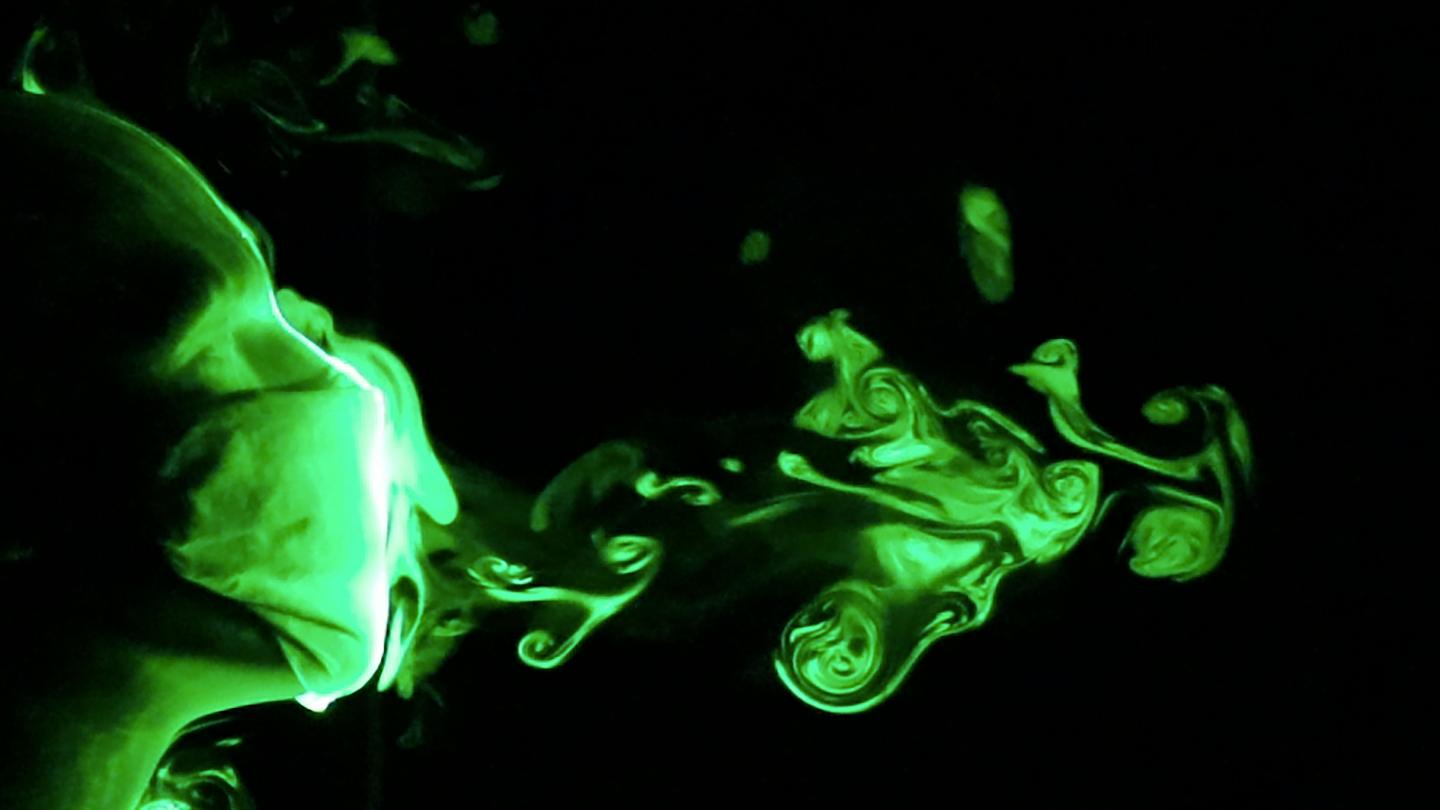Simulated coughs and sneezes from mannequins show higher efficacy in multilayered, well-fitted cloth masks.

Credit: CREDIT: Siddhartha Verma, Manhar R. Dhanak and John Frankenfield
WASHINGTON, June 30, 2020 — While the use of face masks in public has been widely recommended by public health officials during the current COVID-19 pandemic, there are relatively few specific guidelines pertaining to mask materials and designs. A study from Florida Atlantic University, in the Physics of Fluids, from AIP Publishing, looks to better understand which types are best for controlling respiratory droplets that could contain viruses.
Siddhartha Verma and his team experimented with different choices in material and design to determine how well face masks block droplets as they exit the mouth. Using a laser to detect droplets as they were coughed and sneezed out of a mannequin head, the group was able to map out the paths of droplets and examine how different designs and materials alter that path.
The authors note the need for further quantitative analysis but were aware of the power of more straightforward visualization.
“While there are a few prior studies on the effectiveness of medical-grade equipment, we don’t have a lot of information about the cloth-based coverings that are most accessible to us at present,” said Verma. “Our hope is that the visualizations presented in the paper help convey the rationale behind the recommendations for social distancing and using face masks.”
The approach draws on a laser sheet setup that is a mainstay for those studying fluid mechanics, which Verma compares to seeing dust particles in a beam of sunlight.
“The main challenge is to represent a cough and sneeze faithfully,” he said. “The setup we have used a simplified cough, which, in reality, is complex and dynamic.”
The group found loosely folded face masks and bandana-style coverings had little to no effect on stopping droplet jets. Well-fitted homemade masks with multiple layers of quilting fabric and off-the-shelf cone style masks proved to be the most effective. Some leakage notwithstanding, these masks reduced the number of droplets significantly.
When without a mask, the mannequins were projecting droplets much farther than the oft-cited 6 feet in social distancing guidelines.
Verma said the group looks to continue studying the complex interplay that can involve droplet evaporation, ambient airflow and properties of the respiratory fluid ejected that lead to how droplets behave.
“It is also important to understand that face coverings are not a 100% effective in blocking respiratory pathogens,” he said. “This is why it is imperative that we use a combination of social distancing, face coverings, hand-washing and other recommendations from health care officials until an effective vaccine is released.”
###
The article, “Visualizing the effectiveness of face masks in obstructing respiratory jets,” is authored by Siddhartha Verma, Manhar R. Dhanak, and John Frankenfield. The article will appear in Physics of Fluids on June 30, 2020 (DOI: 10.1063/5.0016018). After that date, it can be accessed at https:/
ABOUT THE JOURNAL
Physics of Fluids is devoted to the publication of original theoretical, computational, and experimental contributions to the dynamics of gases, liquids, and complex fluids. See https:/
Media Contact
Larry Frum
[email protected]
Related Journal Article
http://dx.





